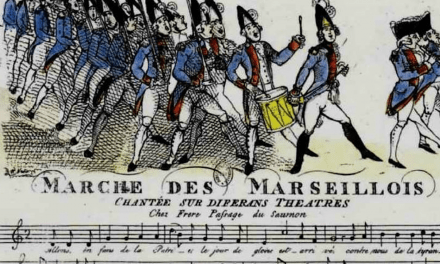As I’ve been reading more about war, I keep on returning to that question posed in our very first lecture: where’s the blood? Going through the long lists of facts and statistics, it becomes easy to slip into this comfortable niche of studying conflict in a detached, sanitized manner, without the real aspect of what war really is. War is intense, painful, patriotic, horrific, emotional, human, and violent. War is full of blood. So why is that blood absent in our academic spaces?
Maybe we don’t like its ugliness. It’s difficult to reconcile the messy aspect of something as human as blood with our clean and respectable views of academia. Somehow that raw emotion can seem so incompatible with logic.
But even when we do incorporate the blood, that poses its own issues. Look at war photography. Collections such as Friedrich’s ‘War Against War!’ use blood as a foghorn. This is the horror of war, they say, it is destructive, evil, absolutely condemned. But focusing on violence in such an emotional way almost seems as reductive as the bloodless approach. Focusing purely on the blood turns war victims into generic bodies, it dismisses the politics.
Are academics meant to be dismissive, above base reactions to violence? Or, no matter how intense the theory, is there always an element of violence that’s fascinating?
In a way, depicting violence can become voyeuristic, leaving us as spectators to that pain. Interestingly, lots of early war photographs were exactly that, little staged scenes meant to shock viewers. As much as we think war photographs condemn violence, watching that pain is itself an act of violence. David Lowenthal argues that in today’s war museums, “nothing seems too horrendous to commemorate”. Suffering serves as a type of “disaster porn”, in which the lives of the dead are taken again– this time as display.
So how do we incorporate the blood? Does it have a place in our study of war? It seems unlikely that we can understand war without the emotions attached to it. As for how to do that respectfully, that’s the challenge.
Not exactly sources, but further readings that have a similar vibe:
http://biblio3.url.edu.gt/SinParedes/08/Weil-Poem-LM.pdf
https://www.scottishpoetrylibrary.org.uk/poem/war-photographer/
(If anyone does want readings on depictions of violence in war photography, war museums, etc. just let me know! Really interesting to see how it’s displayed, and for what purpose. Not to mention, how much of an impact captioning can have on photos. Sets the context for a reaction, and by the simple, informative nature of photographic captions, add to the detached nature of it all. Actually, during the Balkan Wars, Serbian and Croatian press would use the same images of dead children, and just caption it differently to make people angry at the other side. Also interesting to compare non-fiction academic writings on violence [including photograph captions] to memoirs and the like. Interestingly, blood in non-fiction works can very easily read as cold/exploitative. Perhaps when talking about something as emotional as violence, we need our method of communication to be equally emotional [ie memoir vs the more emotionless photograph/nonfiction]. Blood is such a human thing, it only feels genuine when packaged in a human voice)






I wonder if the lack of (so called) “human elements” when focusing on a larger number of casualties has something to do with our inability to process large numbers. It almost feels as if there should be a balance between the small-scale demonstrations of violence and the sheer scale of what a war ‘actually’ is. I don’t really see what that would be though.
Wow love the way this is written! You definitely brought up a lot of interesting stuff about how we handle violence through traditional media and the constant balancing act we face trying not to stray into over-emotional, non-sensical babble but also maintaining the human aspect of confronting violence. What that David Lowenthal quote reminded me of was the argument that with social media we are desensitising ourselves to violence and death. Especially now, where videos of abuse and murder of black people are so readily spread across social media, which begs questions about censorship – where do you draw the line between what is doing more bad than good?